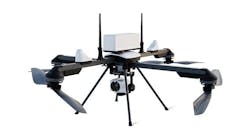HAPSMobile Successfully Completes First HAWK30 Solar HAPS Test Flight at NASA Armstrong Flight Research Center
HAPSMobile Inc. (“HAPSMobile”) announced its successful completion of the first HAWK30 solar-powered high-altitude platform system (HAPS) test flight on Sep. 11, (PT) at the NASA Armstrong Flight Research Center (AFRC) in California. HAWK30 is designed to serve as a stratospheric telecommunications platform system for delivering next-generation global connectivity.
After achieving NASA’s requirements for ground and range safety, on Sep. 9 (PT) HAPSMobile received a limited flight release from NASA’s Airworthiness and Flight Safety Review Board to conduct a test flight of the HAWK30 aircraft in restricted airspace at AFRC.
After operations at AFRC, HAPSMobile plans to transport HAWK30 to the Hawaiian island of Lanai. HAPSMobile will accelerate preparations to perform stratospheric test flights at Lanai in the fiscal year ending Mar. 31, 2020.
Junichi Miyakawa, representative director & CTO of SoftBank Corp., and also president & CEO of HAPSMobile Inc., said, “We’re very pleased that HAWK30’s first test flight was a success. It was an exciting journey to get to this point. We were able to see HAWK30 take flight in front of us and witness its grace in the air. We’re extremely grateful to NASA for their guidance and operational support. HAWK30 is a solar-powered unmanned aircraft designed to provide a high-altitude communications platform, and will be used to provide telecommunications connectivity from the stratosphere as an airborne base station. While this successful test flight represents just the first step, we’re moving forward with tests in the stratosphere and long flight duration tests lasting several months up to half a year. HAPSMobile will continue to work toward its goal of bridging the world’s digital divide and revolutionizing mobile networks by leveraging HAPS.”


